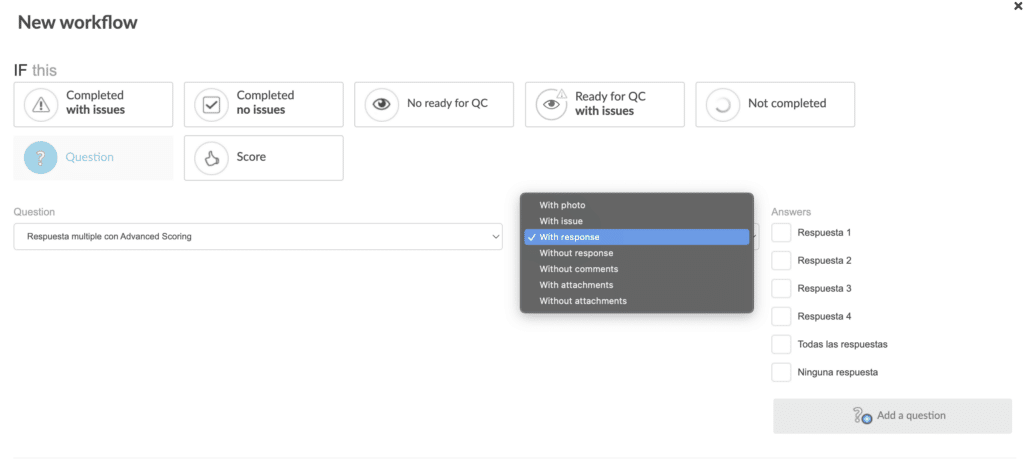Workflows allow you to automate the process of creating checklists or email alerts through a series of conditionals and actions.
1. Create a new workflow #
Go to the “Templates” section and select the template in which you want to activate Workflow.
Go to the “Workflows” tab and click on the “New Workflow” button.

The Workflow configuration which consists of 3 parts.
2. IF this #
First, configure the condition that will trigger the workflow action, in this case the sending of an email notification.
In case you want to configure the workflow to automatically create a checklist, see the following article.
This condition acts as a ‘Trigger’ and only when fulfilled will the notification be sent.

The main conditionals are described below:
Completed with Incidents #
A checklist is completed which contains some issues.
Completed without incident #
A checklist is completed without incident.
Not ready for review #
When the checklist changes to ‘Not ready for review’ status.
Prepared for review with incidents #
When the checklist changes to the status ‘Ready for review with issues’.
Not completed #
When the checklist is in any status other than Completed.
In case of using custom states, Iristrace considers the last non-isolated state as the completed state.
Question #
In this trigger you have to choose one of the questions in the template and select one of the conditions it offers such as: if it has photos, incidents, answers, comments or attachments.

Score #
Here you can compare the total score or the score of a category with the numerical value you enter manually.

3. THEN that #
In this section you configure the action you want the Workflow to perform.
In this case select the option “Send email” and configure the email to which you want to send the notification.
You can configure more than one email account and you can select it from the list of existing users in Iristrace, or include any other external email that you need to receive the configured email.
In the “Additional text” section you can write additional personalised text to appear in the body of the email.

4. WHEN When the condition occurs #
This section is optional and is responsible for re-executing the Workflow every time the time interval you specify is over.
For example, in the screenshot below, it is instructed to resend the notification every day, in case the conditional that triggered the action does not change.

